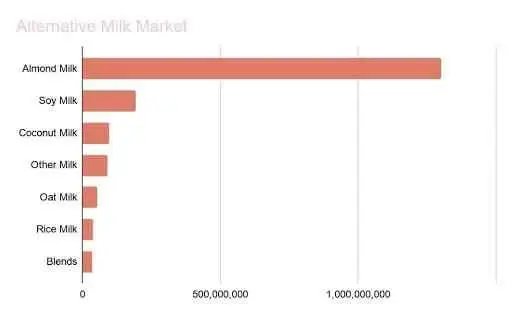In other words, which alt-milk is better for the environment

Picking which alternative milk is best for the environment is relatively simple. The factors are: water usage plus energy used (i.e. greenhouse gas emissions).
To cut to the chase, oat milk/cream wins for overall sustainability even though soy milk is cheaper. Personal taste is a variable too. Nonetheless, switching away from cow’s milk to any non-dairy option is a good personal switch for the planet and many stomachs.
Cow Milk
Dairy milk is the worst for the environment. A 2018 study by Oxford University shows that a glass of cow’s milk has at least three times more emissions than any alternative milk. A liter of cow milk requires 1,050 liters of water to produce, and a 200 milliliter glass of cow milk creates around 0.6 kilograms of carbon dioxide.
Soy Milk
Soy milk is a great alternative and has been the staple for nondairy users. In terms of water usage, a liter of soy milk requires 297 liters of water to produce, and 200 milliliters of soy milk creates 0.195 kilograms of carbon dioxide.
Almond Milk
Almond milk is the most-purchased alternative milk even though it takes a lot of water to produce. A single almond requires 12 liters of water to produce, so a liter of almond milk takes approximately 382 liters of water to produce. On the other hand, 200 milliliters of almond milk emits only 0.14 kilograms of carbon dioxide
Oat Milk
In terms of water, a liter of oat milk requires 48 liters of water to produce. Oat milk also has a relatively low greenhouse footprint, with carbon dioxide emissions at 0.18 kilograms for a 200 milliliter glass.
Objective Look at the Milk Numbers
| Almond Milk | Soy Milk | Oat Milk | ||
| Water | 1050 liters | 382 liters | 297 liters | 48 liters |
| CO2 | .6 kg | .14 kg | .195 kg | .18 kg |
| Price Sept 2022 | $.02750/oz | $.04141/oz | $.04641/oz | $.05578/oz |
Why are Alt Milks More Expensive?
The cost of milk remains low in the U.S. thanks to government subsidies.